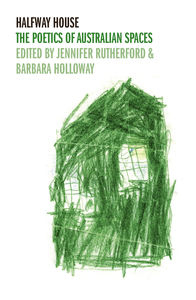Australian space from the outside in: Australia’s representation at the Venice Biennale 1954–2005
Naylor, Stephen (2010) Australian space from the outside in: Australia’s representation at the Venice Biennale 1954–2005. In: Holloway, Barbara, and Rutherford, Jennifer , (eds.) Halfway Houses: the poetics of Australian spaces. UWA Press, Crawley, WA, Australia, pp. 320-332.
|
PDF (Published Version)
- Published Version
Restricted to Repository staff only Available under License Creative Commons Attribution No Derivatives. |
||
![[img]](https://researchonline.jcu.edu.au/12081/2.hassmallThumbnailVersion/12081_Naylor_2010_BookCover.jpg)
|
Image (JPEG) (Book Cover)
- Cover Image
Download (2MB) |
Abstract
[Extract] The Venice Biennale was instigated on April 19 1893, as part of the municipality of Venice's contribution to the silver anniversary of the marriage of King Umberto I and Queen Margherita of Savoy. The city proposed to hold 'a national biennial exhibition of art' which coincided with the celebrations of the newly united Italy. The first Venice Biennale was held in r895, it set to broaden the concept from a national exhibition to an international event and presented over 500 works of art, more than 300 of them by international artists.
The earliest evidence of Australian interest in the Venice Bienniale was recorded in 1907, following a visit to the Biennale by the Italian-born Australian artist Mr Dattilo-Rubbo. The published report revealed that he discussed the idea of Australian participation with the Biennale authorities. Professor A. Fradeletto, the General Secretary of the La Biennale di Venezia, had stated that Venice 'would welcome an Australian pavilion'. The first official invitation for Australia to be represented in the Biennale did not occur until 1924; however Australia declined the offer due to the limited title available to prepare a body of work for the show? The offer was repeated for the 1926 Biennale and early correspondence between the National Art Gallery of New South Wales and the Venice Biennale indicated enthusiasm. However, the pragmatic director, G. V. F. Mann sensed difficulties in the issue of freight and the expenses associated with Australia's distance from Venice. Strategically he advised that the invitation for Australian inclusion should be extended to the Commonwealth Government, as funding could be channelled via federal funds. So began a six-year courting exercise that resulted in much interest but no actual results. In the 1930S the invitations dried up with the rise of Fascism and the ensuing war years.
| Item ID: | 12081 |
|---|---|
| Item Type: | Book Chapter (Research - B1) |
| ISBN: | 978-0-9802964-6-4 |
| Date Deposited: | 19 Oct 2010 04:26 |
| FoR Codes: | 19 STUDIES IN CREATIVE ARTS AND WRITING > 1901 Art Theory and Criticism > 190103 Art Theory @ 70% 19 STUDIES IN CREATIVE ARTS AND WRITING > 1905 Visual Arts and Crafts > 190502 Fine Arts (incl Sculpture and Painting) @ 30% |
| SEO Codes: | 95 CULTURAL UNDERSTANDING > 9501 Arts and Leisure > 950104 The Creative Arts (incl. Graphics and Craft) @ 100% |
| Downloads: |
Total: 362 Last 12 Months: 1 |
| More Statistics |



